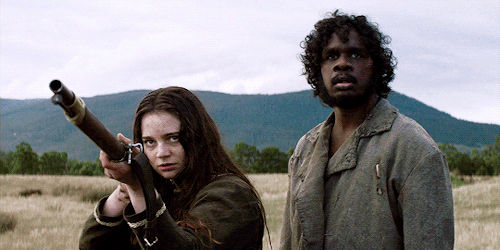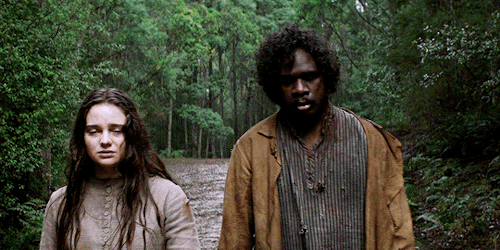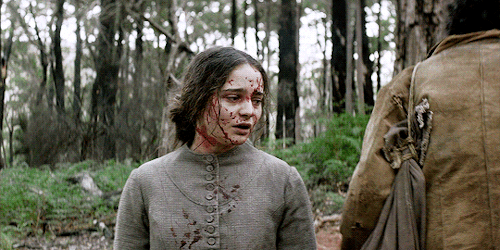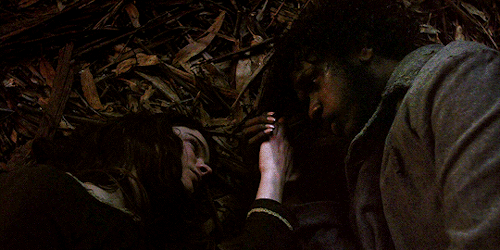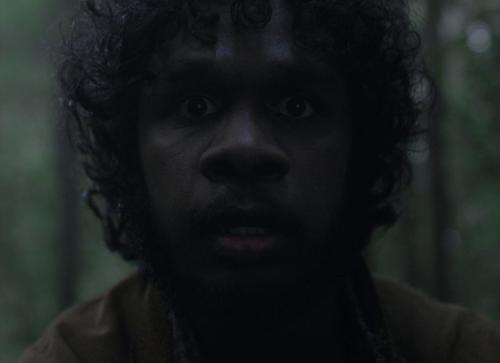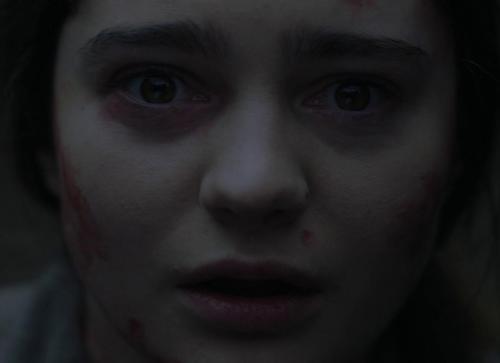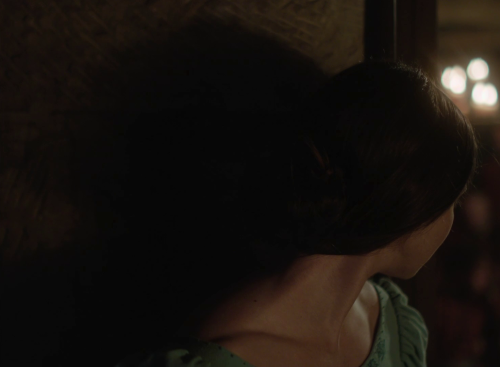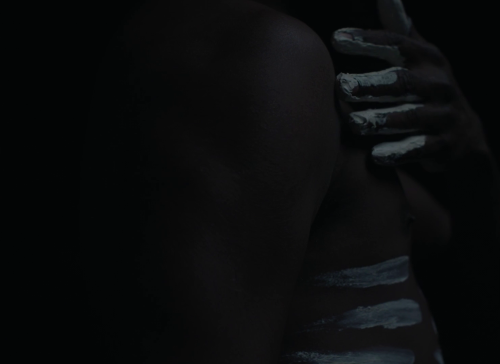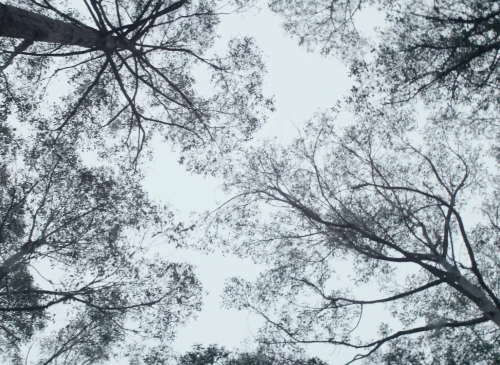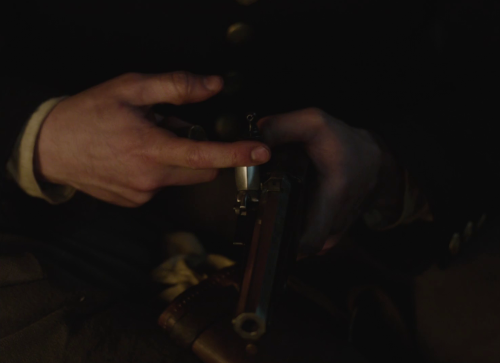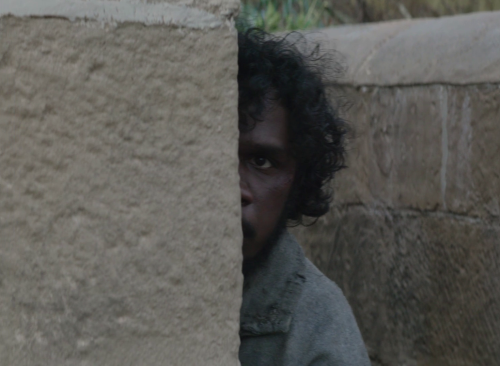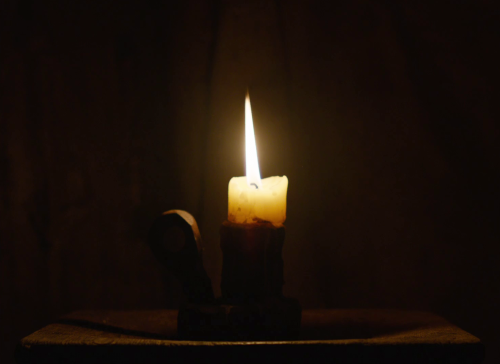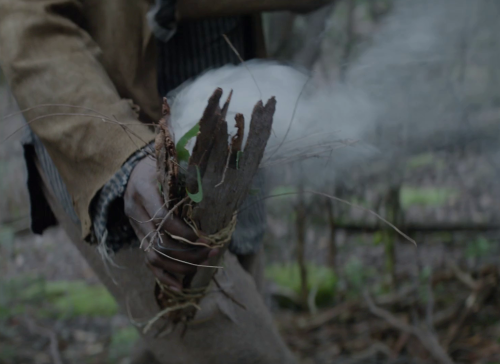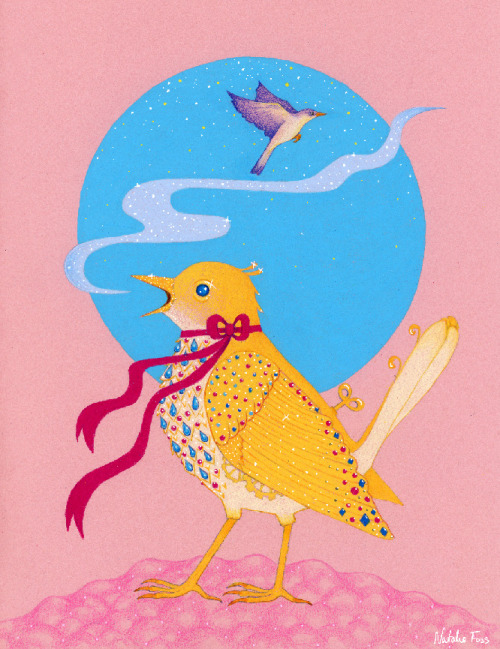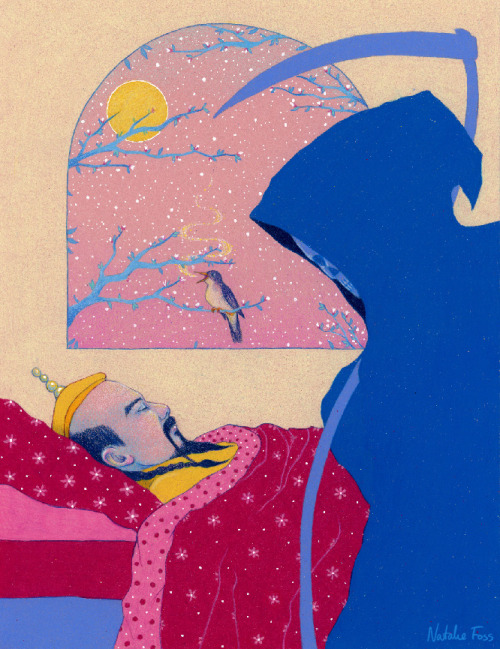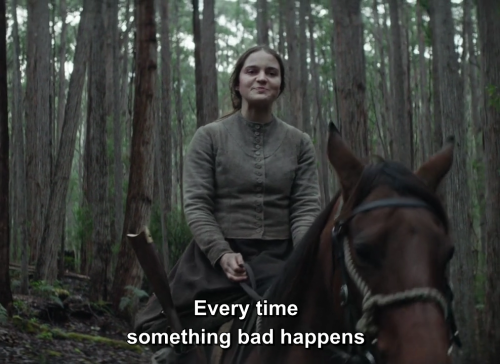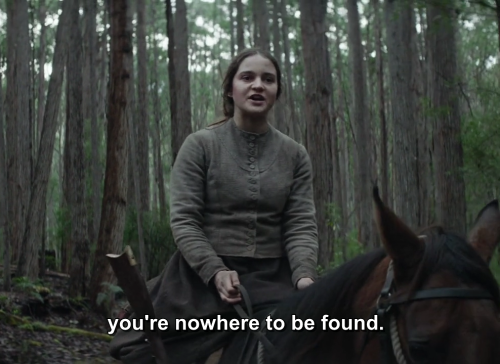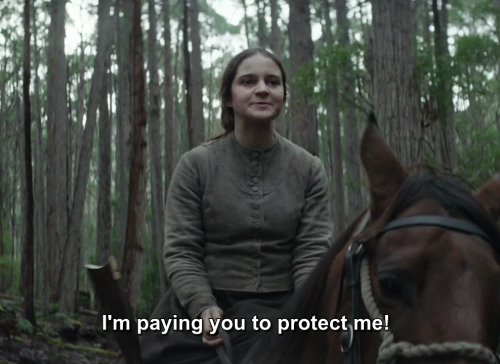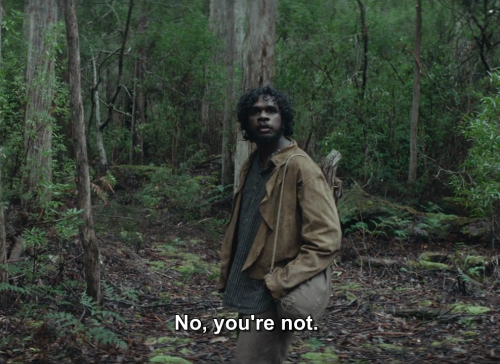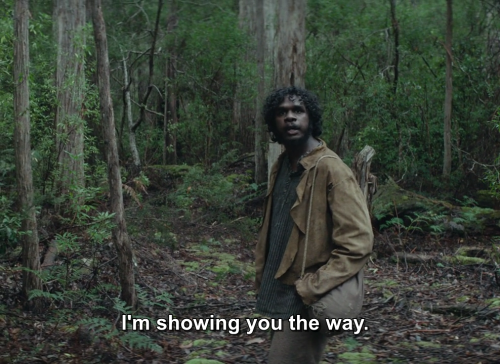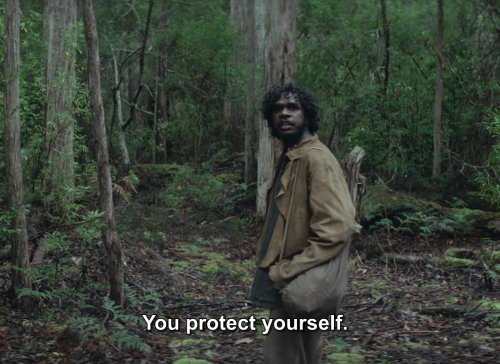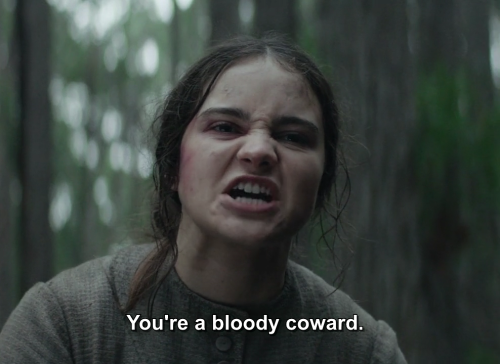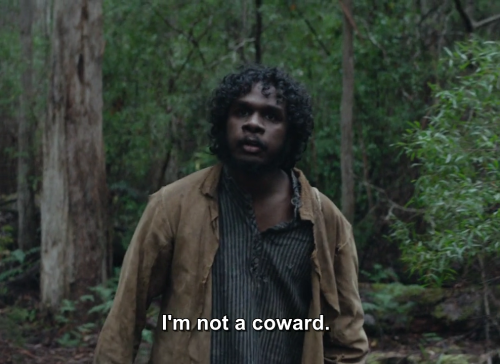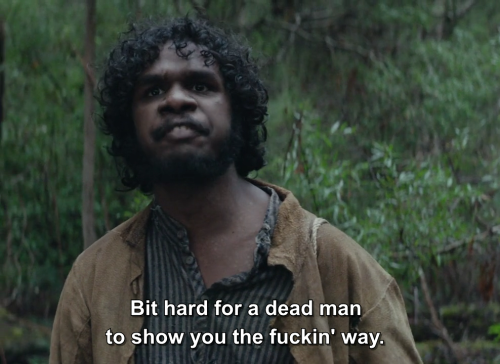#the nightingale
““…I didn’t even know that people escaped over the mountains or that there was a concentration camp just for women who resisted the Nazis.” “Men tell stories,” I say. … “Women get on with it. For us it was a shadow war. There were no parades for us when it was over, no medals or mentions in history books. We did what we had to during the war, and when it was over, we picked up the pieces and started our lives over””— Vianne speaking to her son from Kristen Hannah’s The Nightingale
You will be safe now. I am here with you. Everything will be good now. You can rest.
Baykali Ganambarr as Billy and Aisling Franciosi as Clarein THE NIGHTINGALE (2019) dir. Jennifer Kent
Post link
Dee Laymon- https://www.tumblr.com/blog/amethystpath-writes
Review of The Nightingale- directed by Jennifer Kent, 2018
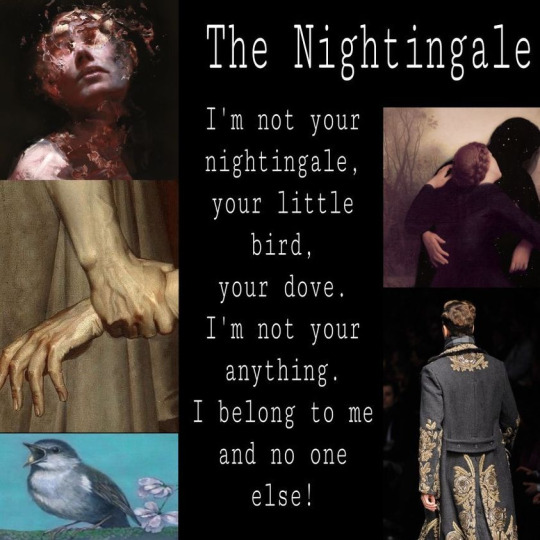
With Aisling Franciosi playing the lead role of Clare, The Nightingale, produced in the year 2018, and directed by Jennifer Kent, shines a light on the truth behind vengeance and revenge. More specifically, it directs the audience’s attention to the pains and harsh realities which a human is forced to face before desiring such retaliation. The film achieves this through scenes of harsh brutalities, ones that we don’t tend to see on-screen and explores these hard-to-face moments successfully with its use of violent emotion, honesty, and historical accuracy.
To establish the historical background, the movie takes place during the year of 1825, in what is now considered present-day Tasmania. As well as this, The Nightingale, occurs during the Black War, a cultural disaster between aboriginal Australians and British colonists. Between the years of the 1820s to 1832, an estimated eight hundred to nine hundred lives were taken; many of these lives belonged to the native, aboriginal people. As heartbreaking as that sounds, the statements I have made here are no match for the film and all which it offered.
Baykali Ganambarr, casted as an aboriginal character, named Billy, in the film, made a statement about the film’s violence, saying, “It’s really important to acknowledge and accept true history and to not sugarcoat it.” Baykali was hired for his ancestry, as well as his inexperience. Kent was looking for an aboriginal with no previous acting experience, as Baykali told interviewers. This allowed for a more authentic portrayal, one that was deep-rooted and genuinely meant something to the film. He says, “Through confronting, you can heal the hurt.” In this, the violence was necessary to portray an accurate image of a real-world event. Seeing as the Black War was such a violent occurrence, there would have been no possible way for the film to have as much gravity, to be so impactful, if it weren’t for the scenes that many of us tend to shy away from. One of these gravitational moments for the character Billy, as well as Baykali as a still-existing aboriginal, is when Uncle Charlie’s body is found dead- when Billy begins his tradition and put Charlie to a proper rest, honoring him, and respecting him. Moments like these, however seemingly harsh, create a perspective you cannot have without seeing it for yourself.
Another example of the impact of violence within the film is this: our main character, Clare, is facing the reality of her husband’s death after being raped by Ruse (Damon Herriman), knocked unconscious by Jago (Harry Greenwood), a close ally of Lieutenant Hawkins (Sam Claflin), and ultimately left to her sorrows. Aisling Franciosi commented, “In terms of sexual violence, she (Kent) wanted to make sure that it wasn’t a brutal act being done to a body, but the destruction of a human being…have it show the emotional damage that can be done.” This scene then shows Clare and her husband, Aidan (played by Michael Sheasby) dancing together on a dark, blank background, whilst pleasant music plays. It’s relaxing and carefree. When Clare wakes up, however, she is seething, raging at the dead corpses of her child and husband, and carrying her baby to an RMP official, looking for the men responsible. Of course, Kent could have easily left out the violent scenes, but then the raw emotions which Clare felt and expressed wouldn’t have been so understood. As Franciosi said, it was the ‘destruction of a human being’ versus ‘a brutal act being done to a body.’ “It’s being honest,” the actress says. The anger and pain are acknowledgeable, but it isn’t felt by the audience until they hear Clare’s screams for her baby, the thud of the child’s head hitting the wall, and the expressionless gaze as Ruse continues to “try it” (as the Lieutenant words the actuality of the event, which is to rape Clare).
Another, needless to say, brutal scene within the movie involves Clare killing her baby’s murderer in the woods of Tasmania while tracking down the very same soldiers she graciously crossed paths with again. In this scene, viewers are faced with the pleas of the murderer, Jago, as he swears he hadn’t meant to kill the baby, which can almost make you feel bad for him (but not quite if you ask me) because it forces the audience to remember how the death of the baby happened.
The Nightingale confronts revenge in a head-on way, involving the audience in every moment, and it therefore alludes to understanding. Vengeance isn’t without reason- it comes from an ache so deep inside that it’s hard to reach through simple cut-to and fade-to-blacks. With an authentic representation of history and a flurry of honest emotions, The Nightingale exceeds the expectations of anyone willing to face the negative realities of our world.
Illustrations for H.C. Andersen’s fairytale “The Nightingale”.
10 stories illustrated by 10 different illustrators, published by Panamericana Editorial, Colombia 2020.
Post link
— Kristin Hannah, The Nightingale
— Kristin Hannah, The Nightingale

